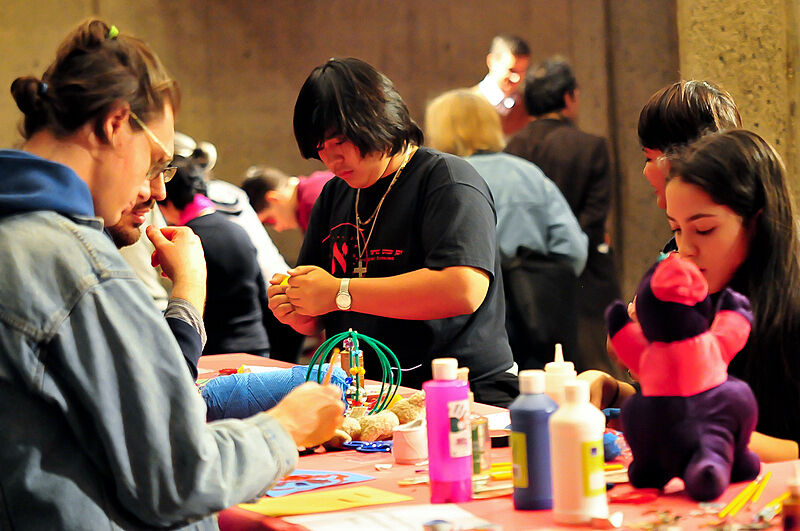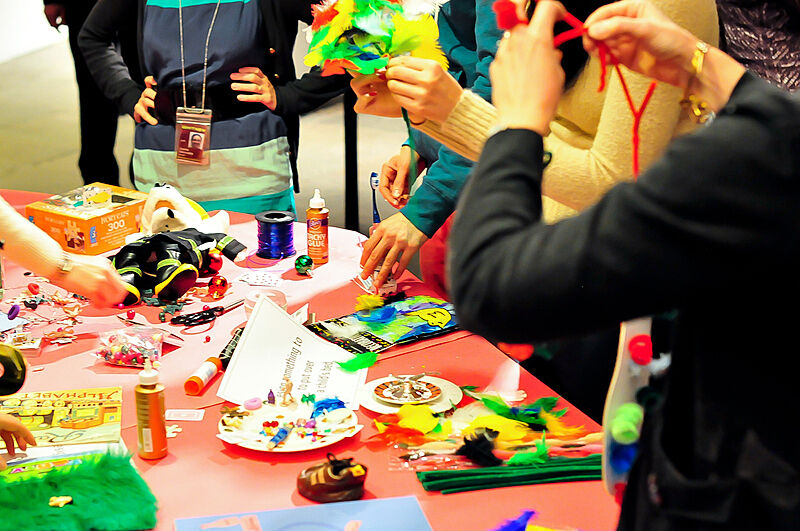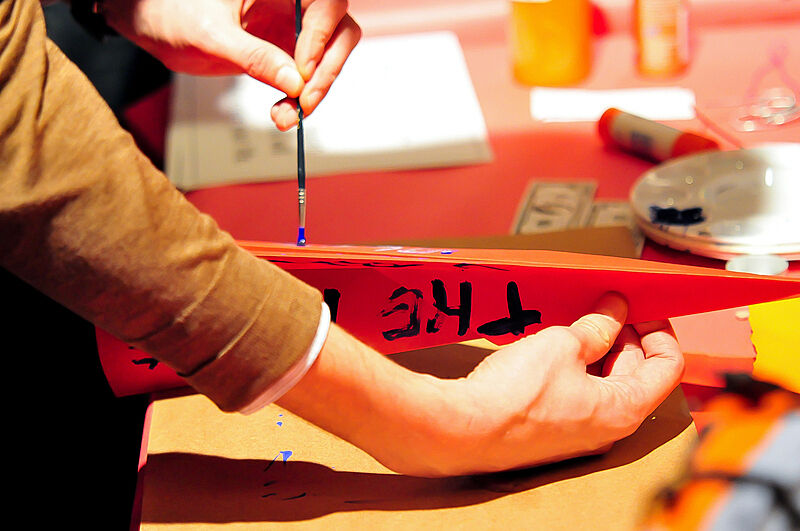Thek’s Teaching Notes: My Turn Program with Harrell Fletcher and Jean Shin
Nov 16, 2010
“Redesign a Rainbow.”
“Paint a series of playing balls like planets, be accurate.”
“Design something to sell to the government.”
On October 29, as part of the My Turn public programs series and in conjunction with the exhibition Paul Thek: Diver, A Retrospective, artists Jean Shin and Harrell Fletcher held a hands-on workshop that invited participants to fulfill a set of quirky directives known as Paul Thek’s Teaching Notes:4-Dimensional Design. As a teacher at the Cooper Union School of Art, Thek prepared for his students a set of assignments that ranged from explicit (“What is your birthdate?”) to philosophical (“What do you think are the qualities of a life fully lived?”) to highly personal (“Make a paperdoll of yourself.”) Illustrative of his own peculiar imagination, Thek’s Teaching Notes challenged students to reinvent language, use unconventional materials, and think creatively about their own artistic processes and their relationships to the world.
Using everyday materials and throw-away objects, workshop participants attempted to “Make something to hang over a child’s bed,” or “Make an icon out of popcorn.” Some visitors jumped right in, using Model Magic, plastic toys, and pipe cleaners to construct raw, funny (and sometimes gross) objects reminiscent of the meat pieces in the exhibition. Others stuck to conventional paint and paper as they considered how to best “Make a large folded-paper airplane, paint on it a slogan which you think will revolutionize your life.” Still others wandered around the workshop tables and listened to Fletcher read the Notes aloud, but were hesitant to construct anything themselves. The evening’s mood, not unlike Thek’s work, combined a sense of childlike play with uncomfortable, unfamiliar challenges.
As the program ended and visitors dispersed, some chose to carry their projects with them, while others disassembled pieces, carrying parts home in pockets or purses. In the spirit of Thek’s ephemeral installations, many people left their objects behind to be thrown out at the end of the night. By choosing the fate of their finished works, each participant grappled with one final question from Thek’s Teaching Notes: “Should art be useful? Useless?”
By Emily Arensman, Coordinator of Public Programs



